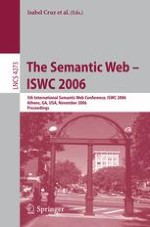“Evolve or perish” – this is the motto for living systems. Judging by this saying, the Web is alive and well: new sites and business ideas are coming online almost daily and are able to attract millions of users often. The more recently coined term “Web 2.0” summarizes many of the new developments, capturing efforts making the Web more interactive (like Ajax), more collaborative (like Wikis), or more relationship oriented (like online social networks), aiming to partially fulfill the original promise of the Web. These new Web developments offer an opportunity and challenge for the Semantic Web: what previously manifested itself mostly in “dry” specifications is now becoming the foundation for information exchange on the Web, creating a shared semantic information space. These and other challenges have been picked up by several hundred computer scientists, developers, vendors, government workers, venture capitalists, students, and users, gathered in Athens, Atlanta, USA, November 5–9, 2006, for the Fifth International Semantic Web Conference (ISWC 2006). Building on previous successful meetings in Sardinia, Sanibel Island, Hiroshima, and Galway, this sixth annual conference demonstrates new research results, technology, and applications that show current incarnations of the Semantic Web. Especially encouraging is the shift towards more applications—whereas the Research Track attracted roughly as many papers as in the previous year, the contributions submitted to the In-Use Track doubled.
